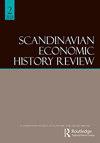大均等化时期工业城市的收入不平等:来自malmö的微观证据,1900-1950
IF 0.5
Q4 ECONOMICS
引用次数: 1
摘要
摘要本文为关于历史收入不平等的辩论,特别是关于二十世纪上半叶工业化国家收入不平等现象减少的辩论做出了贡献。我们使用了1900年至1950年瑞典第三大城市马尔默纳税人的个人和家庭层面的新档案数据。先前的研究已经证实,瑞典在20世纪上半叶的收入不平等现象明显下降,而解释也至少集中在资本收入和税收上。通过我们的原始数据,我们揭示了工人阶级和中产阶级收入的变化,并显示了工人阶级工作升级、家政服务的下降和妇女在劳动力市场上地位的提高,以及最高收入者市场收入的下降在改变马尔默收入分配中的重要性。我们比较了税前和税后的分布,以及个人和家庭层面的分布。通过新的微观数据,可以更丰富地描述二十世纪瑞典的收入增长和收入分配。本文章由计算机程序翻译,如有差异,请以英文原文为准。
Income inequality in an industrial city during the great levelling: micro level evidence from malmö, 1900–1950
ABSTRACT This paper contributes to the debate on historical income inequality, and especially on the decrease in inequality found in industrialised countries during the first half of the twentieth century. We use new archival individual – and household-level data for taxpayers in Sweden's third-largest city, Malmö, from 1900 to 1950. Previous research has established that Sweden had a distinctive downturn in income inequality during the first half of the twentieth century, and explanations have not the least focused on capital incomes and taxes. With our original data we shed light on what happened to working-class and middle-class incomes, and show the importance of job upgrading of the working-class, the decline of domestic service and women's enhanced position on the labour market, and declining market incomes for top income earners in changing Malmö’s income distribution. We compare pre-tax and post-tax distributions, and the distribution on the individual level and the household level. With the new micro data, a richer account of income growth and income distribution in twentieth century Sweden is provided.
求助全文
通过发布文献求助,成功后即可免费获取论文全文。
去求助
来源期刊

SCANDINAVIAN ECONOMIC HISTORY REVIEW
ECONOMICS-
CiteScore
1.60
自引率
16.70%
发文量
20
期刊介绍:
Scandinavian Economic History Review publishes articles and reviews in the broad field of Nordic economic, business and social history. The journal also publishes contributions from closely related fields, such as history of technology, maritime history and history of economic thought. Articles dealing with theoretical and methodological issues are also included. The editors aim to reflect contemporary research, thinking and debate in these fields, both within Scandinavia and more widely. The journal comprises a broad variety of aspects and approaches to economic and social history, ranging from macro economic history to business history, from quantitative to qualitative studies.
 求助内容:
求助内容: 应助结果提醒方式:
应助结果提醒方式:


